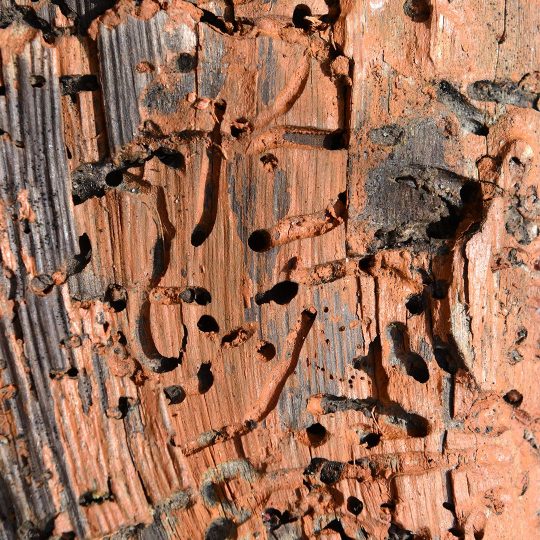Pest Spotlight: Tree Mite Treatment
What Might a Mite Look Like
Posted
July 27, 2017

While mites may be the size of a small speck, they can do a lot of damage to your plants and trees once they band together. Here’s what to look for, and some tree mite treatment options that are best for your trees.
Identifying Tree Mites
Mites are a common pests found on tree leaves and in the garden. They suck the juice from the leaves, leaving them for dead. You’ll find the eight-legged spider mites in clusters underneath leaves. You may even see groups of tiny red specks, a sign of a mite infestation in progress.
Signs of Tree Mite Damage
You may notice the damage tree mites do before you see the tiny pests at all. Here are some signs of mite infestation:
- Yellow, orange, brown, or gray spots on leaves
- Thin layer of webbing over plants
- Dropping leaves
While mites may inhabit any tree or plant in your yard, here are some of their favorites:
- Broadleaf evergreens
- Elm trees
- Fruit trees
- Maple trees
- Mountain ash
- Oak trees
- Roses
Tree Mite Treatment and Prevention
There are a few options when it comes to treating mites:
- If you want to go a more natural route, water can be used to control the mite population. A gentle stream can upset mites and their webbing from your plants, so make sure you spray both sides of the leaves.
- You can also add some soap to water for a insect spray.
- Predatory insects—predatory mites, thrips, and lady beetles—can help defeat minor mite infestations.
- Chemical insecticides can be used, but with caution since they can also kill beneficial bugs and plants. You also don’t want to use any chemicals on fruit trees during their growing season.
Since mites like hot, dry climates and are attracted to thirsty plants, proper watering can help keep plants both healthy and free of pests.